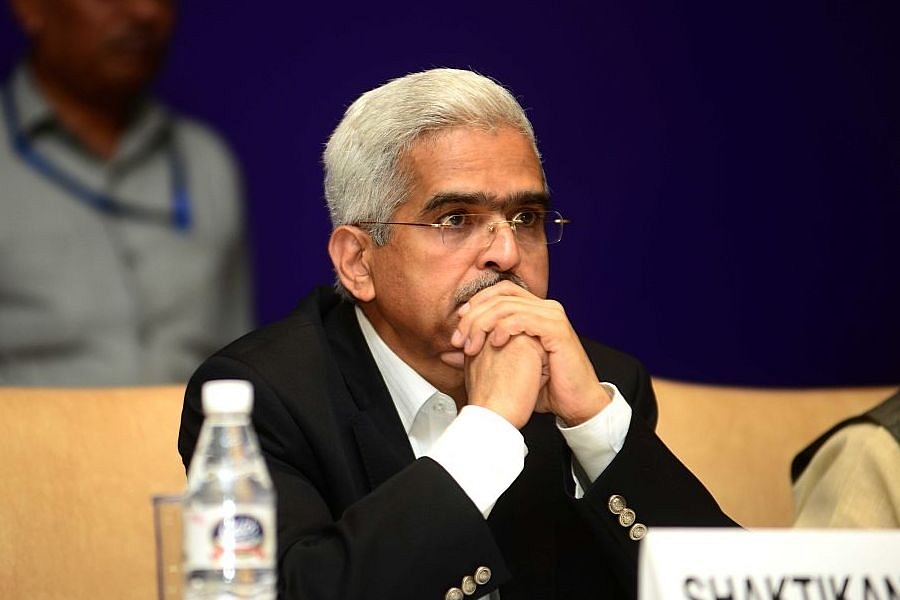Economy
With IIP Weak, GDP Slowing, MPC Must Cut Rates By 0.5 Per Cent To Make Up For Past Misses
- RBI Governor Shaktikanta Das should nudge the MPC to take some risks on inflation when it is still benign, and far below the middle rate of 4 per cent.
- An MPC which takes no risks in favour of growth when inflation is low is not doing its job.

Newly-appointed RBI Governor Shaktikanta Das (Ramesh Pathania/Mint via Getty Images)
The marginally negative growth in the Index of Industrial Production (IIP) in March (-0.1 per cent), and the overall slowdown to 3.6 per cent in fiscal 2018-19 from the previous year’s 4.4 per cent, should prompt the Monetary Policy Committee (MPC) to ignore the small uptick in retail inflation to 2.92 per cent in April when it meets next in early June.
Thanks to a small decline in private consumption and weak pick-up in investment, gross domestic product growth too is expected to have slowed down in 2018-19, which again reinforces the same point. It does not bear repeating that the MPC has been overly conservative (and wildly wrong) in its inflation forecasts, thus keeping interest rates too high for too long. This has been prolonging the agony of both banks and borrowers.
India’s problem is that we have had a pro-cyclical fiscal and monetary policy, where the government has been steadily bringing down the fiscal deficit while the MPC has been keeping rates higher than needed in a wrong-headed emphasis on fighting (non-existent) inflation. We needed mildly reflationary policies at a time when the National Democratic Alliance government’s key policies and reforms (demonetisation, GST, aggressive insolvency proceedings, clampdown on subsidy leakages and tax avoidance) have had a deflationary impact on the economy.
Of the four growth engines – public investment, private investment, private consumption and exports – only two have been firing over the last five years. The double balance-sheet problem has forced banks to go easy on credit, and corporate borrowers to deleverage aggressively, voluntarily or involuntarily. Now, the two engines still firing – public investment and private consumption – are also showing signs of weakening.
In this context, there should be a coordinated loosening of fiscal and monetary policies, with higher borrowings in fiscal 2019-20 to finance public spending, and lower interest rates to help the corporate borrowing cycle to resume while keeping the costs of government debt manageable.
Several banks, including the State Bank of India, have managed to put the worst of the bad loans crisis behind them, but we still have a possible blowout in the non-bank financial sector looming, if liquidity is not eased further. It is in no one’s interest – banks, borrowers, NBFCs themselves or investors in general – to allow the crisis in the sector to fester. A struggling financial sector, whether banks or non-banks, is a bad thing for the economy.
The MPC has been well behind the curve on interest rates. Real interest rates are, even after the small cut in April, well above three percent (the gap between retail inflation and the repo rate), and this is simply too high in an economy that is slowing down.
For once, the MPC has to take courage in both hands and cut interest rates significantly – by 50 basis points (100 basis points make one percent).
This will help banks write off their non-performing loans faster, improve credit growth, and restart the virtuous cycle of growth and investment.
RBI Governor Shaktikanta Das, who has been on both sides of the fence, in the finance ministry and on Mint Street, should nudge the MPC to take some risks on inflation when it is still benign, and far below the middle rate of 4 per cent.
An MPC which takes no risks in favour of growth when inflation is low is not doing its job. Its reputation is on the line.
Support Swarajya's 50 Ground Reports Project & Sponsor A Story
Every general election Swarajya does a 50 ground reports project.
Aimed only at serious readers and those who appreciate the nuances of political undercurrents, the project provides a sense of India's electoral landscape. As you know, these reports are produced after considerable investment of travel, time and effort on the ground.
This time too we've kicked off the project in style and have covered over 30 constituencies already. If you're someone who appreciates such work and have enjoyed our coverage please consider sponsoring a ground report for just Rs 2999 to Rs 19,999 - it goes a long way in helping us produce more quality reportage.
You can also back this project by becoming a subscriber for as little as Rs 999 - so do click on this links and choose a plan that suits you and back us.
Click below to contribute.
Latest